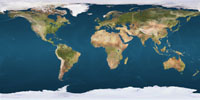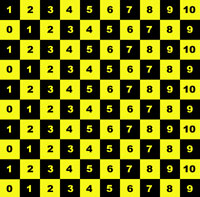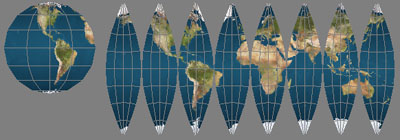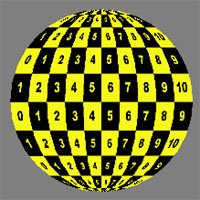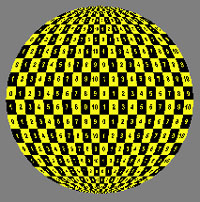| Pattern Machine 3D Introduction to Texture Mapping sartori-software.com 2010 all rights reserved |
||||
|
|
||||
Texture mapping is a graphic design process in which a two-dimensional (2-D) surface, called a texture map, is "wrapped around" a three-dimensional (3-D) object. Thus, the 3-D object acquires a surface texture similar to that of the 2-D surface. Texture mapping is the electronic equivalent of applying wallpaper, paint, or veneer to a real object. The simplest texture mappings involve processes such as that shown here In some mappings, the correspondence between the 2-D texture map and the 3-D object's surface becomes "messy." An example is the application of a pattern of squares to the surface of a sphere. It is impossible to paste checkered wallpaper onto a sphere without cutting the paper in such a way as to create discontinuities in the pattern. This problem occurs with many texture mappings. A complex pattern can, in some cases, be seamlessly wedded to the surface of a 3-D object using a sophisticated graphics program, like Pattern Machine 3D. For example, a sphere can be given a wood-grain finish. |
Texture
Texture
|
Rendering Output
Rendering Output
|
||
In the texture mapping process, texture coordinates UV are converted to Object coordinates XY. The tiling amount of the Texture Map over the Object is defined by Tile U and Tile V Some examples below |
||||
|
Texture Map
|
Tile U: 0,5 Tile V: 0,5 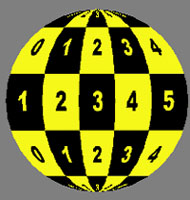 |
Tile U: 1
|
Tile U: 2 Tile V: 2
|
|
